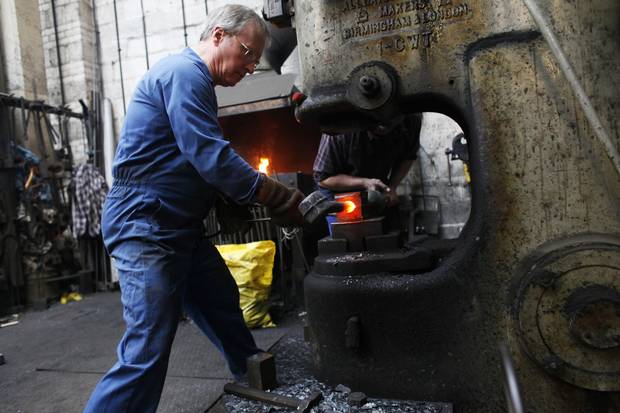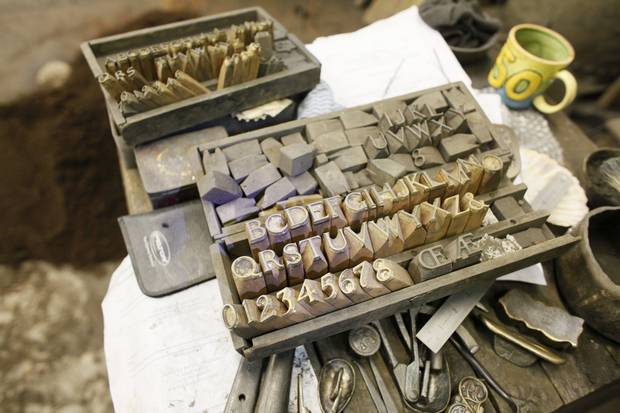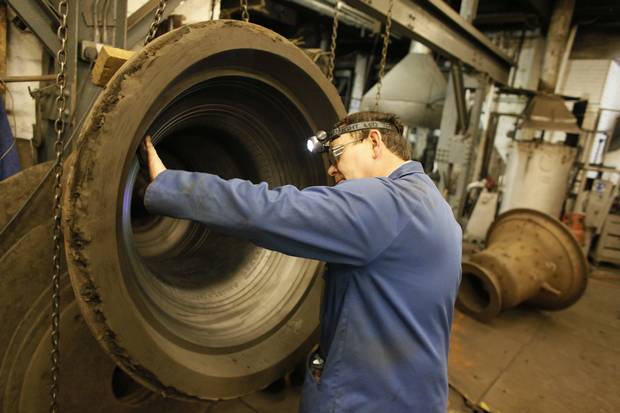Plunging church membership in much of the Western world is not only leaving church pews largely empty, it's hurting an ancient craft – bell making.
Earlier this month, Whitechapel Bell Foundry announced it was closing its doors after more than 400 years in operation. The company's renowned work includes the Liberty Bell, Big Ben and the "Gros Bourdon" at Montreal's Notre-Dame Basilica. But now the owners have succumbed to a shrinking market and a rapid decline in the number of churches. Hundreds of churches across Europe have been left vacant, and attendance at services in much of the developed world has been falling for decades. The percentage of Canadians who say they attend church at least once a month fell from 43 per cent in 1986 to 27 per cent in 2012.
"We have made this decision with a heavy heart, but in response to the changing realities of running a business of this kind," said Alan Hughes, 68, who runs the business with his wife Kathryn out of a building in London's East End.

At Whitechapel Bell Foundry in 2012, Allan Hughes works on forging a clapper with Peter Trick for bells in honour of Queen Elizabeth II’s Diamond Jubilee. ( Read Elizabeth Renzetti’s 2012 report on the making of the bells and their role in the jubilee.)
JIM ROSS FOR THE GLOBE AND MAIL

A letter set for engraving sits on the table at Whitechapel. The Royal Jubilee Bells went to St. James Garlickhythe church in London after their role in the 2012 jubilee.
JIM ROSS FOR THE GLOBE AND MAIL
The Hughes family has owned Whitechapel since 1904, but its roots stretch back to 1570 and the reign of Elizabeth I. It has been one of the world's leading bell makers and its products are bound up in Britain's history. Two bells cast by the foundry in 1538 are still used at London's Westminster Abbey and in 1752 Whitechapel made what became the Liberty Bell for the State House in Philadelphia. The company made Big Ben for Britain's Houses of Parliament in 1856, and struck the bell that launched the London Olympics in 2012.
Listen: What the bells of Westminster sound like
The giant bell in Montreal's Notre-Dame Basilica was cast by Whitechapel in 1843 and for a brief time it was the largest in the world.
Listen: What Notre-Dame Basilica’s bells sound like
Ms. Hughes said they have spoken with potential buyers and "sincerely hope that these negotiations are allowed to continue and will conclude with a move to new premises for part or parts of the business."
But there are doubts a buyer will be found, and none of the couple's children want to take over the business. Many bell foundries have closed or merged over the years, leaving only a handful that ply the ancient trade. "If you would decide to start a bell foundry in this era I think many people would question whether you have a healthy mind," said Joost Eijsbouts, who owns Royal Eijsbouts, a bell maker based in the Netherlands that makes up to 1,000 bells annually. Mr. Eijsbouts has worked with Whitechapel on many projects, and while he was saddened by the announcement, he wasn't entirely surprised.
"I've been speaking to Alan Hughes several times over the past years and there were some rational reasons to make this step understandable," Mr. Eijsbouts said. "But there's also the age of the entrepreneurs, knowing that they have no successors in their own family, and the fact that the bell market is getting increasingly complicated. It's not a growing market in the traditional part of the world, and slowing down elsewhere. Overseeing the whole landscape, I can very well understand the step decided on."
Royal Eijsbouts has gone through its own changes. Two years ago the company merged with another Dutch bell maker, Royal Petit & Fritsen, which was facing ownership-succession issues. The merger made Royal Eijsbouts the world's largest bell foundry, with just 50 employees. "In the world of bell foundries, the second-largest would be half the size of us," Mr. Eijsbouts said. Other major players include Cincinnati-based Verdin Company, which makes bells and clocks, and Marlmark Inc., based in Pennsylvania, which makes hand bells.
Bell makers have been forced to adapt over the years as church attendance declined and other buyers, such as universities and governments, faced tighter budgets. Bells for cathedrals or town squares can cost more than $1-million each and projects often take many years to complete as congregations and governments scramble to raise money. And since these bells can last for centuries, repeat customers are rare.
To survive, most companies have had to branch out and offer products such as hand bells, dinner bells and carillons, instruments made up of 23 bells which cost about $700 each. Whitechapel began making doorbells a few years ago and tried to capitalize on the popularity of Downton Abbey by producing a range of dinner bells.
"We've survived because we produced stuff that people want. That means constantly adapting. You do not remain in business if you keep saying no. Twenty years ago we didn't provide any doorbells," Mr. Hughes told the Sunday Telegraph last year.
Mr. Eijsbouts said the news isn't all bad. While church-going is falling across much of the world, demand for church bells is still steady in places like Brazil, Argentina and Chile. And the market for carillons has been growing, albeit slowly.
But when asked if he thought Whitechapel will continue under new ownership, Mr. Eijsbouts paused and replied: "That's very hard to say. Time will tell."
Video: Centuries old bell foundry closing its doors
Paul Waldie is European correspondent for The Globe and Mail. Follow him on Twitter: @pwaldieGLOBE
BRITAIN'S HISTORY: MORE FROM THE GLOBE'S PAUL WALDIE


